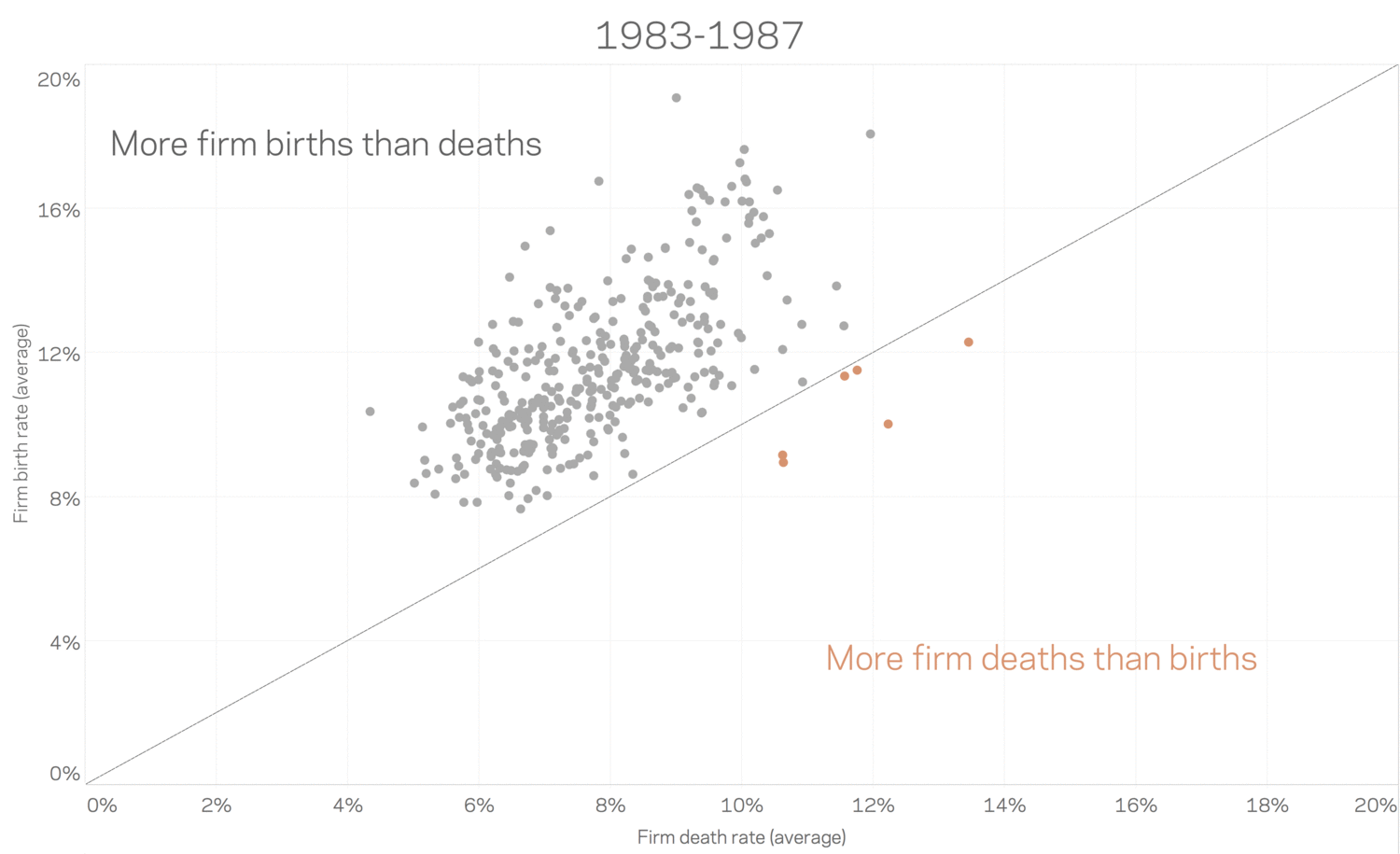The consequences of declining dynamism
While economic dynamism has powered U.S. prosperity for generations, it is now declining in nearly every definition of the term, according to new research from the D.C.-based think-tank and advocacy organization Economic Innovation Group (EIG). In Dynamism in Collapse, an analysis of economic conditions from 1977 to 2014, EIG finds that dynamism has decreased substantially, as seen in diminishing rates of job turnover, the share of employment in new companies, and the percentage of the population moving across state lines. This eroding dynamism, the report finds, has led to considerable challenges for regions, markets, and workers.
While the rate of business closures has remained steady over the timeline analyzed, EIG finds that the rate of new business formation has plummeted, an effect exacerbated by the great recession. This marked the first time in American history, according to EIG, that companies died at a faster rate than they were born. EIG suggests that this declining dynamism has led to more geographic inequality, as many regions see historically low levels of new business starts. Overall, six out of seven regions failed to keep pace with the national startup rate.
A visual representation of metropolitan level firm dynamism, seen below, highlights this inequality: in 2014, roughly three-fifths of regions saw more businesses close than open. Of the 366 metropolitan areas studied, just five – New York, Dallas, Houston, Miami, and Los Angeles – produced the same net increase in businesses as the rest of the nation combined.

Declining dynamism has also influenced the structure of enterprise and employment. From 1992 to 2014, firms that were at least 16 years old went from representing 23 percent of total firms to 36 percent. Likewise, a record 74 percent of the workforce was employed by a firm that is at least 16 years old in 2014, up from 60 percent in 1992. In addition to firms being older, industries are also more concentrated, as defined by the share of total revenue going to the top four firms in a given sector. An analysis in The Economist finds that 66 percent of industries became more concentrated from 1997 to 2012.
A combination of increased concentration and decreased dynamism means fewer job options for workers and lower wage growth, EIG argues. From 1992 to 2014, new businesses created 2.9 million net new jobs, while incumbent firms typically lost more workers than they hired. EIG estimates that, had the 2006 rate of business starts held constant through 2014, there would have been 154,000 additional startups in 2014 that would have led to 924,000 new jobs.
EIG points to the Investing in Opportunity Act (IIOA), a bipartisan proposal first introduced in the Senate last April and reintroduced last week, to address the issue of declining dynamism. The act would allow private investors to pool money into “Opportunity Funds,” which would be located in state-designated “Opportunity Zones” in distressed communities, which would be defined by indicators such as educational attainment, employment, poverty, and housing vacancy rates. Because the investors would be able to defer paying capital gains if they are reinvested in the zone, the bill’s authors suggest that this incentivizes long-term commitments to these communities.
The report concludes by noting that no one silver bullet policy can solve the problems inherent in declining dynamism, but that should not stop policymakers from engaging in the topic. Fostering entrepreneurship in a greater portion of America, EIG argues, is crucial to repairing the American Dream and strengthening the country’s future competitiveness.


